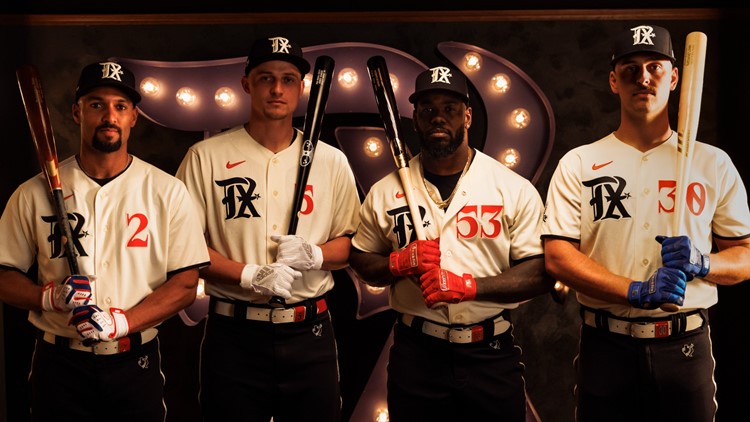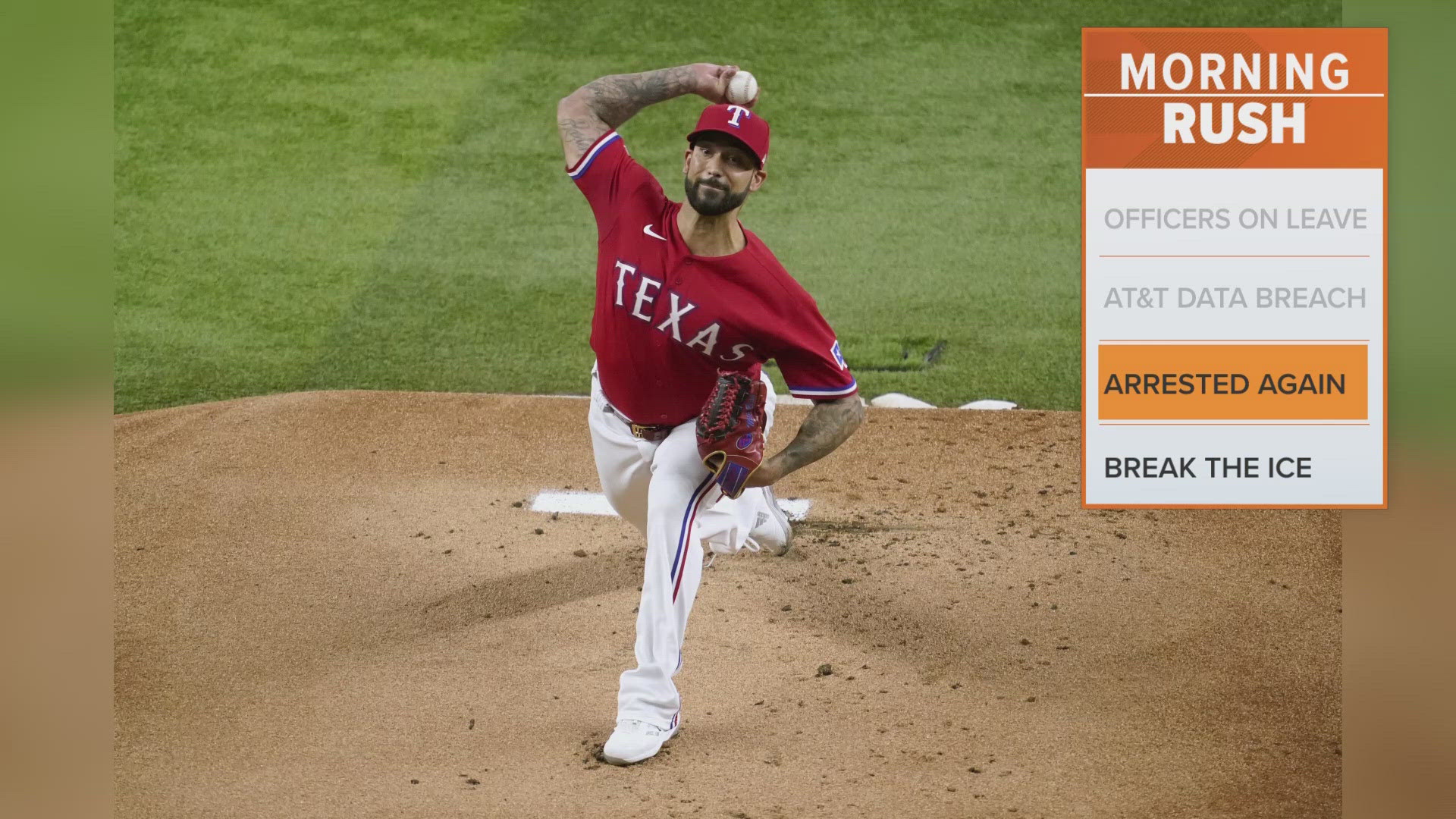ARLINGTON, Texas — The Texas Rangers debut their new City Connect uniforms Friday night against the Oakland Athletics. Fans love them. Fans hate them. That's usually how these things go.
But if you look at the uniforms and the reveal video closely, and if you read the club's reasoning behind the design, you'll see the new threads are loaded with nods to North Texas' baseball history, much of which might be largely unknown to the casual fan.
The Rangers brought the big leagues to Dallas-Fort Worth in 1972, but pro ball was played here long before that. The City Connect uniforms pay homage to those long-forgotten minor-league teams, including the Dallas Eagles, the Fort Worth Panthers (later named the Cats) and the DFW Spurs.
The City Connects even include a Peagle on the sleeve.
Yes, a Peagle.
The Rangers went ahead and created a mythological creature, a combination of a panther and an eagle. I guess when you have the chance to create a mythological creature, you do it.
The Peagle might sound complicated, but, well, DFW's pre-Rangers baseball history was complicated.
Here's our best attempt at weaving it together, including that one time Willie Mays came to town:
The Dallas Eagles
The Dallas Eagles technically go back to 1888 - yes, that far - when professional baseball first came to Dallas. But back then, the club was originally called the Dallas Hams, according to the Bullock Texas State History Museum.
After a series name changes, including the Rebels and the Steers, Dick Burnett bought the club in 1948 and renamed the team the Eagles. The Eagles had a high-profile run for a minor-league team. Burnett pushed hard for sellout crowds, and part of that included bringing in big league players for exhibition games.
On opening day in 1950, the Eagles played at the Cotton Bowl in something of a gimmick: Burnett had brought on Hall of Famers Ty Cobb, Tris Speaker, Mickey Cochrane and Dizzy Dean, all long-retired at that point, to face the Tulsa Oilers, as the Bullock Museum explained.
The big-league legends only faced one batter, though. Dean walked the leadoff batter, got into an argument with the umpire and then the team walked off the field. The real Eagles replaced them and played the rest of the game.
The gimmick worked: Over 53,000 fans showed up for the game, a Texas League record.
The Eagles also faced major league teams in exhibition games through the years, including Willie Mays and the New York Giants (not the football team ... the team moved to San Francisco in 1958). While the 1950 season opener was at the Cotton Bowl, the Eagles played their games at Burnett Field, just southwest of downtown Dallas, as detailed by the Texas State Historical Association.
Burnett Field, while long gone, held a nostalgic place for Dallas baseball fans of that era.
"Don't get the wrong idea here – as stadiums went, there was really nothing special about Burnett Field," Dallas sports radio host Mike Rhyner, now with 97.1 FM The Freak, told WFAA in 2019. "It was a place where you came to watch baseball, but as far as having any unique feature about it, it really didn't, as far as I could tell. But for people of this certain age that I am now, that like baseball, it's special, man."
Fort Worth Panthers (Cats)
Most Fort Worth baseball fans know of the Cats, an independent league team that played for years at LaGrave Field, north of downtown Fort Worth.
The club debuted as the Panthers in the early 1900s, a nod to Fort Worth's "Panther City" moniker, according to Fort Worth Historical.
At the same time, the Fort Worth Black Panthers played in the Negro Leagues. The Black Panthers drew thousands of fans for a game against the Dallas Black Giants, as detailed by Texas Almanac, and the club played games across Texas through the 1940s, when baseball began to integrate.
By then, the Fort Worth Panthers were renamed the Cats, and they were Cowtown's version of the Dallas Eagles, a longtime Texas League staple that had affiliations with major-league clubs.
The Panthers also had their brush with famous players as an affiliate for the Brooklyn Dodgers in the 1940s and 1950s. Duke Snider, Carl Erskine and Maury Wills – all future big league stars – played in Fort Worth before reaching the game's biggest stage.
The Cats folded in the 1960s but were revived as an independent team in the early 2000s, when they began playing at a newly-constructed LaGrave Field. The club played at LaGrave through the 2014 season – which included a few games from a then-55-year-old Julio Franco – but LaGrave has remained empty since.
If you watched one of the Rangers' City Connects release videos, you'll notice LaGrave Field featured prominently.
The Dallas-Fort Worth Spurs
The Dallas-Fort Worth Spurs had a more straightforward origin story, and more short-lived tenure, too.
As the TSHA site explains, the Spurs were the first pro baseball team to play in Arlington. The club didn't last long, serving as the Metroplex's minor-league team from 1965 to 1972. But they kicked off a new era of baseball in North Texas, playing in the newly-built Turnpike Stadium, which would later be expanded into the Rangers' Arlington Stadium.
The Spurs were the first team to play in Arlington but they weren't the first to don the Dallas-Fort Worth name. That began in 1960, when the Dallas Eagles and Fort Worth Cats formed into one club as the Dallas-Fort Worth Rangers. The team played their games at both Burnett Field in Dallas and LaGrave Field in Fort Worth.
All of which is to say, it's a little less complicated these days, with only one local team: the Texas Rangers.
But the City Connect uniforms, if nothing else, tie together DFW's layers of baseball history.



